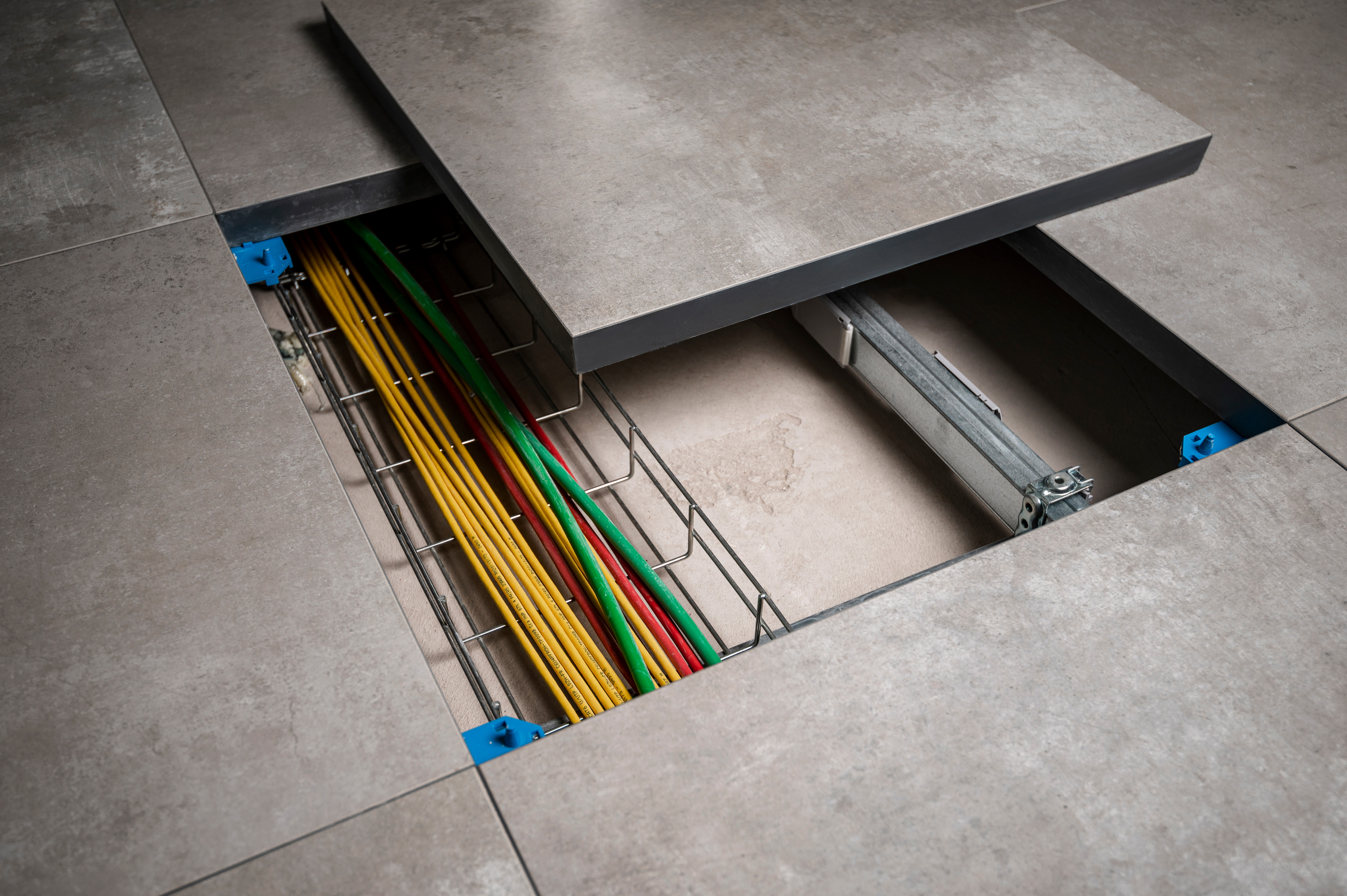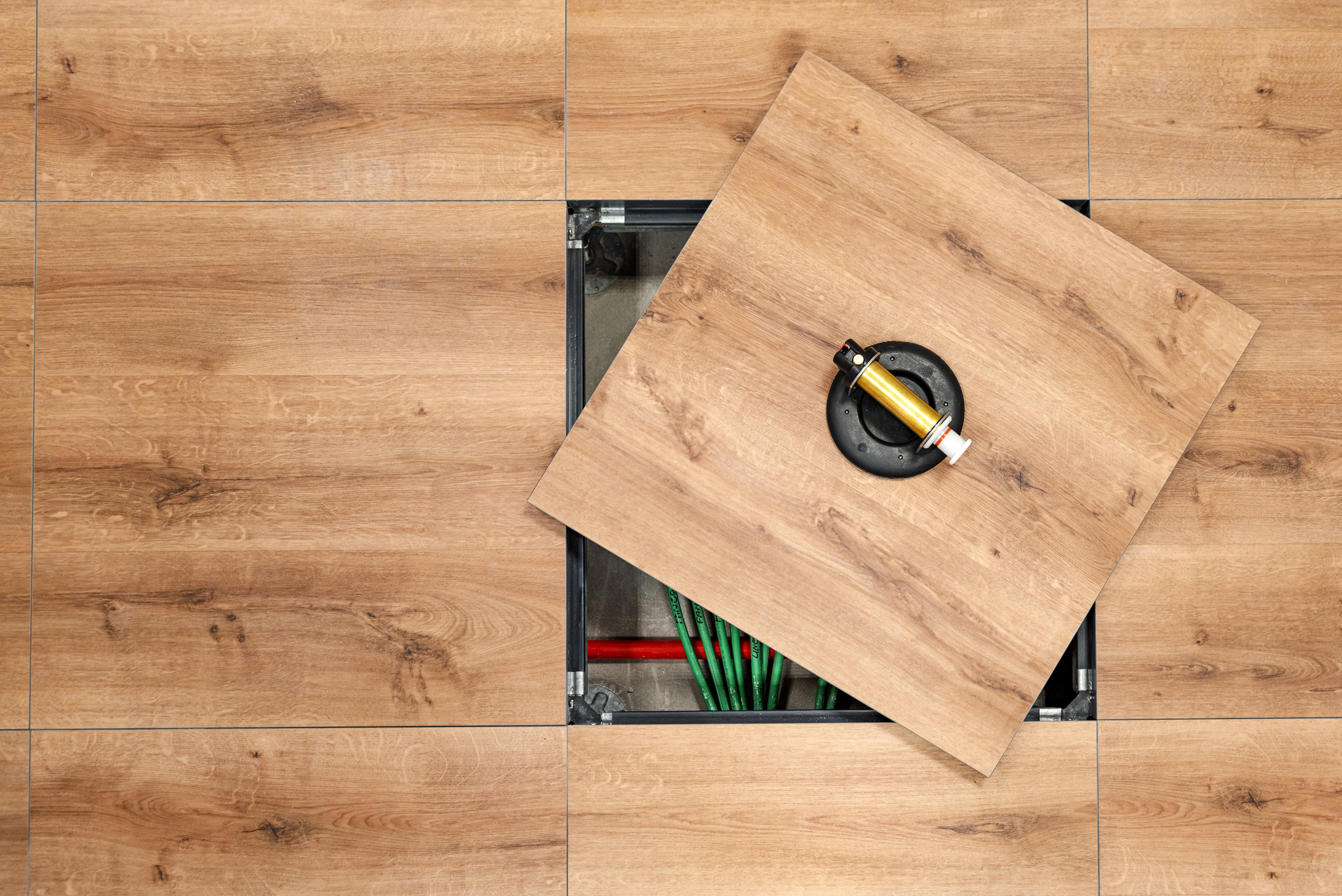The Benefits of Raised Access Flooring: A Modern Solution for Flexible Workspaces
31st Oct 2024

In today’s fast-paced, technology-driven world, the infrastructure that supports our workspaces must be as adaptable as the companies that use them. One solution that's gaining popularity for its versatility and efficiency is raised access flooring. If you're designing a new office space, data centre, or any environment requiring frequent reconfiguration, this type of flooring could offer significant advantages.
What is Raised Access Flooring?
Raised access flooring consists of a grid of modular floor panels supported by adjustable pedestals, creating an elevated space (or "plenum") between the original concrete subfloor and the new walking surface. This hidden space is invaluable for housing wiring, cabling, and HVAC components, and it provides easy access to them without disrupting operations.
However, raised access flooring offers more than just convenient cable management. Here are several benefits to consider:
1. Flexible Cable and Utility Management
One of the standout benefits of raised access flooring is the ability to manage and hide complex networks of cables. As businesses grow and evolve, their wiring and electrical needs change. Traditional flooring requires disruptive and expensive modifications whenever cabling must be added or re-routed.
With raised floors, you can simply lift up individual panels to access cables, allowing for easy upgrades or repairs. This flexibility reduces downtime and costs, particularly in environments like data centres or tech-heavy offices, where cable management is critical.

2. Improved Airflow and Climate Control
Raised floors are often used in conjunction with underfloor air distribution (UFAD) systems. These systems channel conditioned air through the plenum space and into the workspace above via strategically placed vents or diffusers. By distributing air from the floor rather than the ceiling, it becomes easier to control and maintain ideal temperatures, especially in areas with heat-generating equipment.
Moreover, the natural segmentation of airflow zones allows for more precise heating and cooling, increasing energy efficiency and lowering utility costs.
3. Enhanced Aesthetic and Ergonomic Design
A clutter-free workspace is both visually appealing and functionally better for employees. Raised access flooring eliminates the need for unsightly cable trays and wall-mounted conduits. By keeping cables, power outlets, and even some mechanical systems below the floor, workspaces appear cleaner and more organized. This not only contributes to a more professional atmosphere but also promotes better safety by minimizing tripping hazards.
The modularity of access floors also allows for easy incorporation of ergonomic features, such as adjustable-height desks or flexible seating arrangements, further improving workplace well-being and productivity.
4. Easy Reconfiguration for Dynamic Environments
In modern workspaces, where reconfigurability is key, raised floors provide unmatched flexibility. As teams grow or departments shift, layouts often need to change quickly. The modular nature of raised flooring makes it easy to move equipment, change desk configurations, or repurpose rooms without major renovations.
In comparison to tearing up traditional flooring or hiring contractors to reroute utilities, making changes with raised flooring is both time- and cost-efficient. This feature is especially valuable for industries that rely on technology and require frequent infrastructure upgrades.
5. Improved Acoustics
Noise is a major concern in open-plan offices and data centres. Raised access flooring can help dampen sound by absorbing vibrations, especially when paired with sound-absorbing pedestal cradles and adhesive. The flooring system reduces footfall noise, ideal for busy office environments or high-traffic areas. This acoustic improvement can lead to a more comfortable and focused work environment, enhancing productivity and employee satisfaction.
6. Sustainability and Longevity
Raised access floors contribute to green building practices and sustainable design. Since they offer efficient climate control and the ability to reuse floor panels in different configurations, they support energy conservation and resource reuse. Furthermore, the materials used in raised access flooring are often recyclable, making the system more eco-friendly.
Additionally, raised floors are durable and can withstand high loads, which is especially important in data centres or industrial settings where heavy equipment is frequently used. The ability to easily replace or repair individual panels also extends the overall lifespan of the flooring system.
7. Future-Proofing Your Infrastructure
Technology is evolving rapidly, and the infrastructure we rely on today may be outdated tomorrow. Raised access flooring provides a level of future-proofing, allowing businesses to upgrade systems, install new technologies, and maintain efficient operations without undergoing a complete overhaul. Whether you need to integrate new power solutions, data infrastructure, or environmental controls, the flexibility and accessibility of raised floors ensure you're ready for whatever comes next.

Conclusion
Raised access flooring is more than just an architectural solution—it’s a strategic investment in flexibility, efficiency, and sustainability. From streamlining cable management to enhancing energy efficiency and improving workspace ergonomics, the benefits of raised flooring are substantial for any business looking to future-proof its operations. Whether building a tech-forward office or upgrading a high-demand data centre, raised access floors can offer immediate and long-term value.
For businesses that prioritise adaptability, innovation, and efficiency, this flooring system is a step towards creating smarter, more dynamic environments.